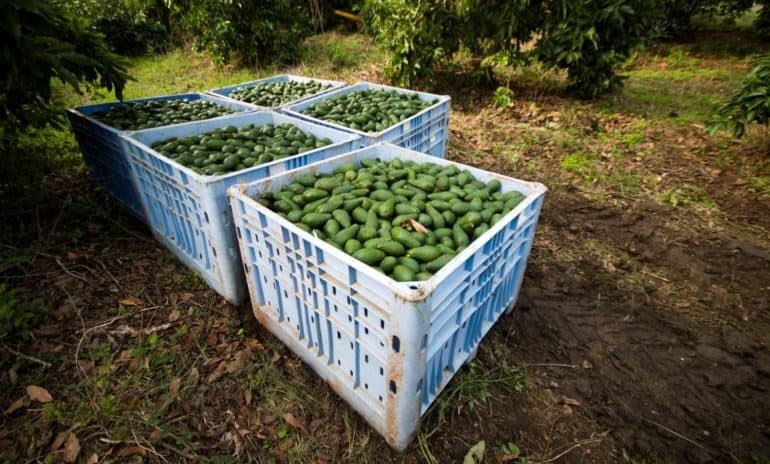According to the Hass Avocado Board (HAB), United States avocado consumption has doubled in the last decade. Shipments across the country went from 565,000 metric tons (MT) in 2010 (more than 1.2 billion pounds) to almost 990,000 MT in 2015 (more than 2.2 billion pounds), according to HAB’s Yearly Volume Data. In many exporting areas, such as Mexico, the rapid increase in demand has put a strain on local environments.
Tree clearing and a higher water demand reduce forest cover and soil water-storing capacity, leaving high exporting regions prone to fires. According to Ricardo Luna García, Environment and Natural Resources Secretary for Michoacán, in the current administration 40 percent of forest fires were a result of deforestation practices aiming to establish avocado orchards and other crops and to widen urban grazing areas. Forest cover loss estimates range from 30 percent across the state to up to 60 percent in the regions of the Purépecha Plain, la Cañada de los Once Pueblos, and the lakeside of Pátzcuaro.
Every year, more than 20,000 hectares of forest (77 square miles) are converted to avocado production in Michoacán, according to Luna García. Because avocado monoculture requires a constant and generous supply of water, aquifer levels have lowered. Some avocado orchards also block surfaces of natural repletion of the aquifers, like the ones located to the south of the state in the Río Chiquito Basin, where the Morelia aquifer and the Cuitzeo Lake both recharge. A weak streamflow can cause sediment problems, aggravating the cyclical dry periods.
The avocado strip in Michoacán is the production leader nationwide in Mexico and a hotspot for avocado traffic due to the combination of a strong demand and high prices. Joint data from the Universidad Nacional Autónoma de México and San Nicolás de Hidalgo University in Mexico show rapid growth in avocado cultivation—20,000 hectares (77 square miles) of avocado registered in Michoacán state in 1970, and 165,000 hectares (637 squares miles) in 2017. Researchers from the Instituto de Investigaciones Sobre los Recursos Naturales, in Michoacán, estimate almost half of the settlements are not officially registered.
In mid-2017, avocado prices in the U.S. increased as much as 55 percent due to high demand, a lower domestic production, and cut downs from exporting countries. Mexico, Chile, and Peru provide more than 98 percent of U.S. avocado imports. In 2014, these countries collectively harvested an avocado area of 215,818 hectares (more than 833 square miles, roughly the combined territory of Alaska and California) according to U.N. Food and Agriculture Organization (FAO).The U.S. has grown into the largest global importer of avocado since import restrictions started to ease in 1997—these restrictions were removed altogether by 2007.
Tension in U.S.-Mexican trade may cause a price increase, but that wouldn’t dissolve avocado production as demand continues in the U.S. and other parts of the globe. Traders forecast an increase in Mexican avocado global exports of more than 1 million MT in 2016 to 2017 ( 2.2 billion pounds), due to a favorable international demand. Japan and Canada are strategic market niches for Mexico, and approximately 374 million pounds of processed avocado (guacamole) are sold each year to the U.S., Europe, the Middle East, and Asia.













